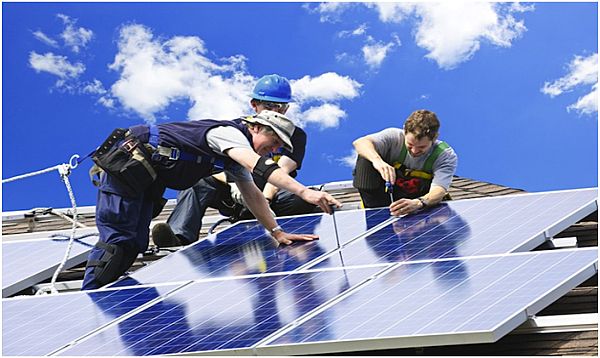Mazatlán, México - Earlier this year Mexico's energy secretary (SENER) presented new guidelines for the interconnection of small solar systems to the national electricity grid.
The revised regulations are designed to boost rooftop installations by making it easier and more attractive for residential and commercial consumers to invest in solar energy. The new rules apply to solar systems with an installed generation capacity less than 500 kilowatts (kW).
At the end of last year, Mexico reached 220 megawatts (MW) of distributed rooftop solar generation capacity based on figures from SENER. In 2016, it is estimated that 100 MW of distributed solar energy projects were installed. This number is forecast to more than double in 2017 to 240 MW, which would put Mexico at 460 MW of distributed solar energy by the end of 2017.
Growth in this market segment is due to a 25% increase in the price of electricity for high consumption domestic users last year and similar rate increases for commercial users. This combined with lower solar panel and component pricing has reduced the average return on investment from five to four years.
The government hopes the new rules will help them reach their goal of 500,000 domestic rooftop solar systems interconnected to the grid, or 5 percent of all homes in Mexico. The government states this would save the country $5.9 billion pesos, or US $314 million, in subsidized electricity generation costs that are currently provided to assist Mexican families with the high cost of electricity.
The new distributed solar regulations form a part of the Federal government's broader energy reform agenda and long-term goal to generate 25% of the country's electricity from clean sources by 2018, 35% by 2024, and 50% by 2050!
The key changes to the interconnection rules are as follows:
Interconnection times cut down to 13 days
• The manual simplifies the interconnection process, shortening the application processing time and installation of the two-way 'smart' meter.
• The new regulations signed into law, allow a maximum of thirteen days to interconnect a solar system to the grid.
• A maximum of 18 days is permitted for more complicated interconnection applications.
The CFE will no longer review interconnection applications
• Previously, the CFE was responsible for the review and approval of interconnection applications and installation of the two-way "smart" meter.
• Moving forward, the new independent grid operator, CENACE, will be in charge of the review process and meter installation.
• The change was made to remove a potential conflict of interest with the CFE's new solar subsidiary company and remove uncertainty on how long it will take to interconnect solar systems to the grid.
Larger solar systems allowed
• Residential customers are now allowed to interconnect solar systems up to 25 kilowatts of capacity (previously 10 kW was the maximum capacity permitted)
• Low voltage commercial customer's interconnection limit was increased to 50 kilowatts of capacity (previously 25 kW)
• The simple interconnection process remains for solar systems up to a maximum capacity of 500 kW.
It should be noted that solar systems up to 50 kW are regulated under Mexico's attractive net metering laws, which values excess solar generation at the high retail rates. Whereas, solar systems between 50 and 500 kW are required to enter into a net billing scheme, where excess electricity generation is sold into the wholesale power market at nodal pricing. You can actually download an app on your smartphone to see the day ahead nodal prices in your region of the country.
To see if Mexico stays on track to meet their long-term clean energy targets, keep your eyes on an upcoming announcement by the secretary of energy set for April 28th. The government is expected to announce the start of its third renewable energy auction. The auction process is expected to be completed by mid-October, with winners announced shortly thereafter.
Project developers are eagerly awaiting the announcement as 2016 was a ground-breaking year for the Mexican renewable energy sector. Last year, 4,731 megawatts of lucrative long-term power purchase agreements were awarded (60% solar, 40% wind). These projects are expected to generate approximately US $6.1 billion of investment.
Jarrett Leinweber, M.Sc., is an entrepreneur, environmental and sustainable energy specialist. He provides consulting services and is a developer of solar energy and electrical infrastructure projects. He can be reached at jleinweber(at)electrifica.com.mx.


